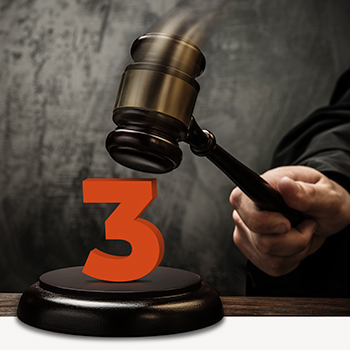
In every CP lawsuit, there are a number of defenses knowledgeable cerebral palsy attorneys can expect to hear. Typically, we hear all of them in the same case.
1. “We didn’t do anything wrong.”
This is the standard defense – deny it. In every case the defendant doctor and nurses will look at the medical records and fetal heart rate tracings and say some variation of: “this is all normal, there were no signs of fetal distress, the baby’s condition at birth was a total surprise.” This is the “trust us” defense. No one wants to believe that medical professionals would be careless enough to look at signs of possible fetal distress and just assume that the baby is fine. That makes this a powerful defense – the jury wants to believe the doctor and nurses were careful. To overcome this defense we have to show that they are simply wrong. To do this we use:
- Expert Medical Testimony
- Publications by Professional Organizations
- Medical Textbooks
- Medical Journal Articles
2. “We didn’t do anything wrong, but even if we did, something else caused the Injury.”
This is the “have it both ways defense.” We often see this because if the jury believes any part of this sentence, the defendants get away with it. Here’s why: in a medical malpractice case we have to prove that the defendants didn’t meet professional standards of care. But that’s not all. We then have to prove that the failure to meet professional standards of care caused our client’s injury. Our personal injury lawyers cannot prove our case without proving both. So the “have it both ways” defense is aimed at defeating either one, or both, of the two elements we have to prove.
As to the “something else” that may have caused the injury, the defendants usually blame the following alternative causes:
- Infection
- Placental abnormality
- Metabolic or genetic abnormality
- The injury occurred days before labor
- The injury was not caused by inadequate oxygen, but by some unknown and undiagnosed condition
Testimony from medical experts in the fields of neurology, neuroradiology, infectious diseases, and placental pathology is critical to defeating these defenses. Equally critical is a thorough understanding of the medical literature relating to the causes of cerebral palsy.
3. “The child isn’t hurt that bad, or the child won’t live very long.”
Sadly, we frequently have to deal with defendants who are willing to contest the extent of our clients’ injuries or how long they will likely live. In our system, the only measure of justice available is money damages. These defenses are aimed at reducing the amount of money a doctor or hospital will have to pay if the jury finds that they were negligent and caused injury.
Typically these defenses take two forms. First, they will contest the life care plan. The life care plan is a comprehensive projection of all of the treatments, therapies, medical evaluations, attendant care, and other expenses a disabled child is most likely going to require throughout his life. Defendants will often challenge the items in the life care plan as either not necessary or too expensive. Sometimes they’ll argue that government will pay for some items through Medicaid and Social Security Disability (as in, “don’t make us pay for it, let the taxpayers foot the bill.”). In cases in which our client does not need a life care plan, the defense will argue that he will either outgrow his disability or that it’s not a severe as his parents believe it to be.
Second, they’ll argue that our client won’t live very long. They will make this argument because if a jury awards money for our client’s future medical care, the longer she lives, the more the defendants will have to pay. So, in an attempt to reduce damages, they will argue that because of her disability, she won’t live very long, or won’t live as long as our experts say that she will.
Defeating this defense, like all of the others, requires experience, knowledge of the medical literature, and access to highly qualified medical experts.
